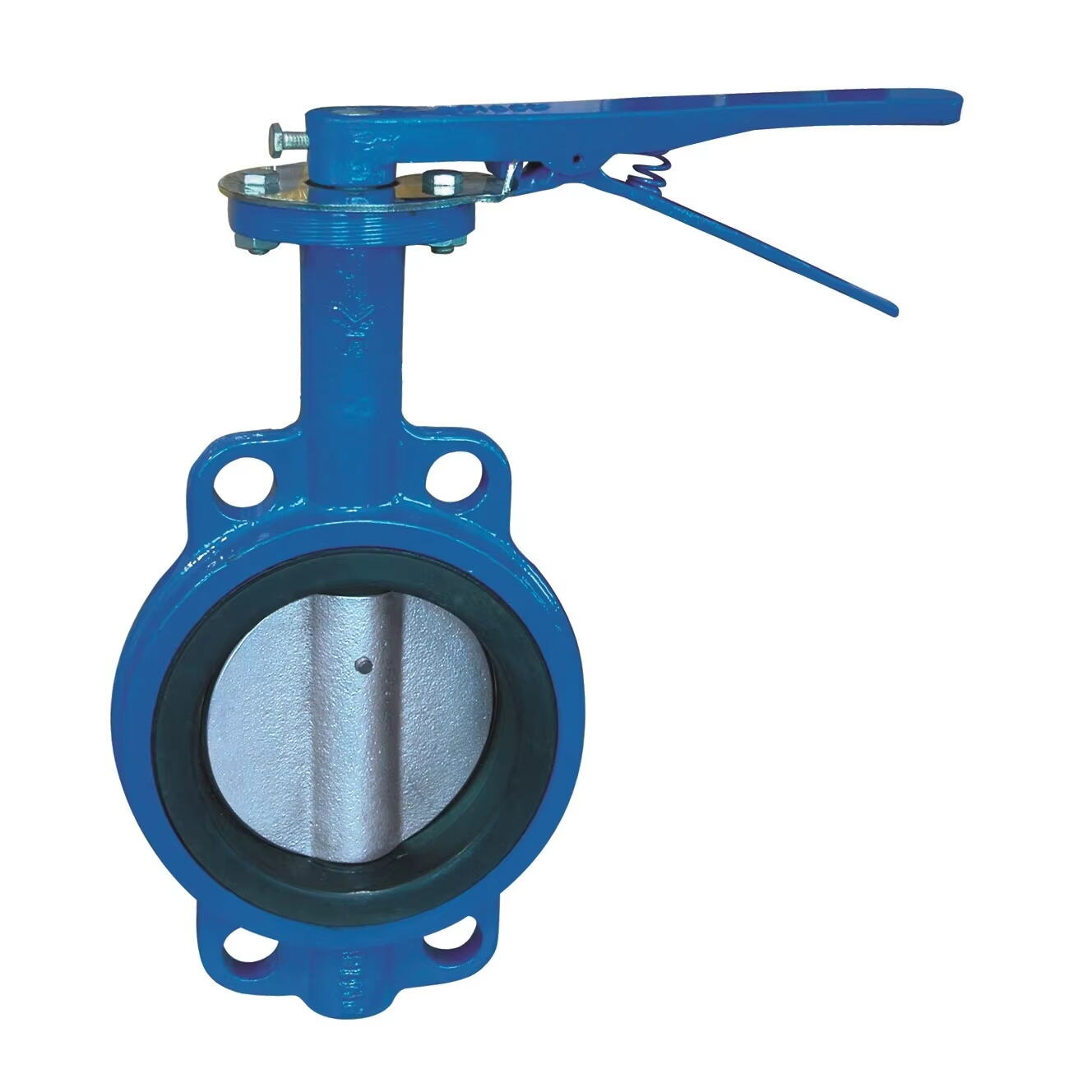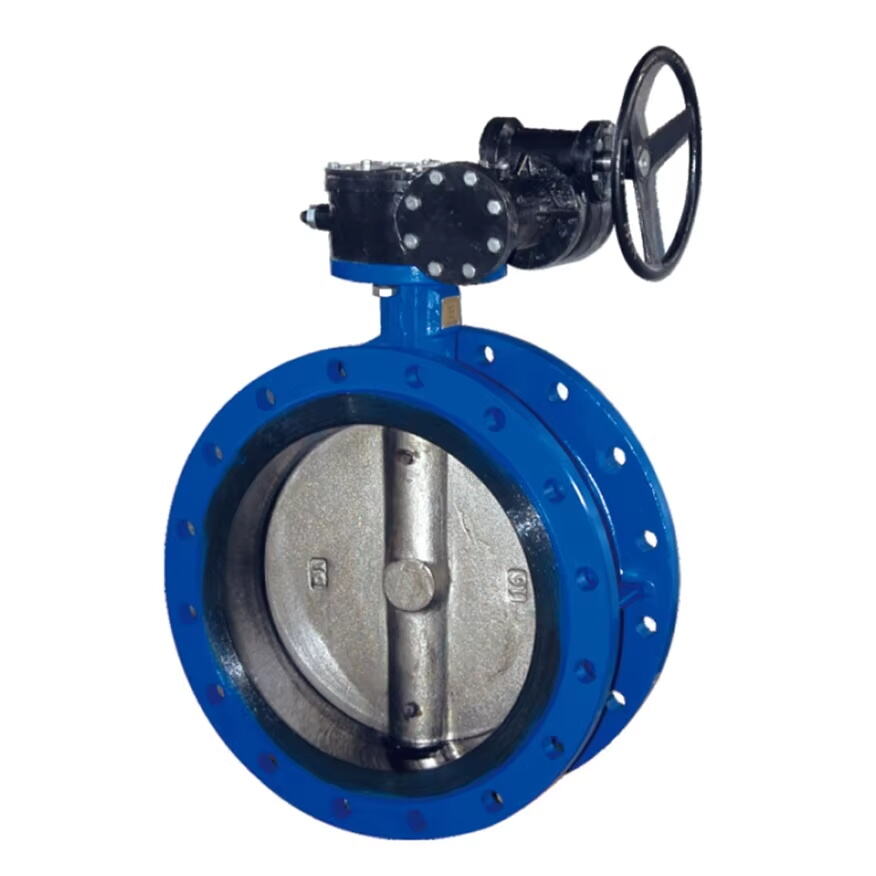Өнөр жай крандарында узак мөөрдүүлүк менен өнүмдүүлүктү камсыз кылуу
Чечек чакырмалары ар кандай өнөр жайларда ыңгайлуу конструкциясы, арзан баасы жана иштетүү жеңилдиги аркылуу маанилүү роль ойнойт. Бул крандар жыш оңдо суу таратуу системаларынан баштап химиялык өндүрүшкө чейинки колдонулуштарда пайдаланылат, ошондуктан алар агымды башкаруу системаларынын негизги компоненттери болуп саналат. Оптималдуу иштөө режимин сактоо үчүн эчки күрөң кран -ды туруктуу жана сапаттуу техникалык күтүү керек. Мезгилинде күтүүнүн болбошо түзүлүштүн иштебей калышына, агымдын бузулушуна жана түгүл системанын толугу менен токтоп калышына алып келет.
Алдын ала каржы салуу деген эмне болгондуктан эмне болгон эмес, бул иштетүү тиешелүүлүгүн, коопсуздугун жана узак мөөнөттүнү камсыз кылуу үчүн процессти түзүү. Көп күлчө клапандын кантип иштээрин, кандай маселелер пайда болушу мүмкүн экенин жана аны кантип туура каржылоо керекттигин билүү убакытты жана акчаны тежейт. Бул маакалада күлчө клапандарды тиешелүү түрдө каржылоо боюнча толук нускама берилет жана узак мөөнөттү иштөөнү камсыз кылат.
Өнөр жай системаларында күлчө клапандардын ролүн түшүнүү
Негизги түзүлүш жана функционалдуулук
Күлчө клапан дискти айландыруучу таякка бекитилген дисктен турат. Клапан жабык болгондо, диск агымды толугу менен тосуп турат. Ачык болгондо, диск чейин айланып агымга чексиз жол ачат. Булардын компактты түзүлүшү жана аз гана кыймылдагы бөлүктөрдөн тургандыктан, күлчө клапандар оңой орнотулат жана каржыланат, атайынча иштетүү талап кылынган же тез жабуу керек системалар үчүн.
Көбөлөк клапанды колдонуунун негизги артыкчылыгы - чоң көлөмдөгү агымды төмөнкү басым менен түртүү мүмкүнчүлүгү. Бул клапандар аралаштыруу жана изоляциялоо функцияларында сенсиз эмес экендиги менен белгилүү, анткени суу тазалоо станцияларында, тамак өнөрмүшүндө жана HVAC системаларында терс аракетсиз колдонулат.
Көп таралган көбөлөк клапандардын түрлөрү
Өнөрмүш системаларында колдонулган көбөлөктүн ар түрдүү клапандары бар. Аларга концентрикалык, эки жана үч жолу шилтемелүү көбөлөктөр кирет. Ар бир түрү ылайыктуу түрдө колдонуу үчүн жана операциялык шарттар үчүн долбоорлонгон. Мисалы, концентрикалык клапандар төмөнкү басымдык колдонуулар үчүн эң жакшы болсо, үч жолу шилтемелүү клапандар керектүү тартылган жана жогорку аткаруу белгилөө үчүн колдонулат.
Туура типтеги клапанды аныктоо - эң жакшы иштегенге жана бузулуу коркунучун азайтууга жардам берген биринчи кадам. Туура тейлөө процедуралары колдонулуучу көпөлөк клапандын конкреттүү түрүнө ылайыкташтырылышы керек.

Кезек боюнча текшерүү жоспарын иштеп чыгуу
Визуалдык жана функционалдык текшерүүлөр
Кезек боюнча текшерүүлөр клапанын жана анын айланасындагы бөлүктөрдүн толук визуалдык текшерүүсү менен башталышы керек. Тозуу, жеңилдөө же коррозия белгилерин издөө керек. Көп учурда иштебей калган клапан операцияларды туткунго албашы мүмкүн, бирок убакыт өткөн сайын кичине кемчиликтер чоң көйгөйлөргө айланып кетеби анык.
Функционалдуу текшерүүлөргө клапанын толук айкалышын текшерүү кирет. Эгерде кө butterfly клапаны жабышып калып, бирдей эмес айланып же туура жабылбаса, түзөтүү чараларын ишке ашыруу керек. Бул тазалоо, майлаш же тийиштүү бөлүктөрдү алмаштырууну камтышы мүмкүн.
Текшерүү маалыматын жазуу
Системаңыздагы ар бир каптал үчүн техникалык күтөө журналын түзүү — бул ылайыктуу ыкма, анын иштөө мүнөзүн байкап, келечекте күтөө зарылчылыгын болжолдоого мүмкүнчүлүк берет. Иштөө сааттары, эң кенен мүнөздөмөлөр, текшерүү натыйжалары жана күтөө чаралары боюнча маалыматты жазыңыз. Бул маалымат иштөөнүн келечектеги мүнөзүн болжолдоо жана системанын иштөөдөн чыгып калуу убактысын азайтуу үчүн ылайыктуу болот.
Текшерүүнүн натыйжалары убакыт өткөн сайын иштөө мүнөзүн салыштырып, жаңыртылышы же алмаштырылышы керек бөлүктөрдү аныктоого жардам берет. Жакшы күтүлгөн каптал системанын иштешинен гана эмес, бүткүл системанын иштөө мөөрүн узартууга да жол берет.
Тазалоо жана майлаш ыкмалары
Регулярдык тазалоонун мааниси
Чий, майда таштар жана калдыктар көбөйүп жабышкан учурда көбөлөк клапандын иштөөсүнө күчтүү таасир этет. Клапан корпусу менен дискти регулярдуу тазалап турганда агымдын жеңил агышын камсыз кылып, иштөө кедергисинин пайда болушун алдын алат. Күрмө пульпа же көрт суюктуктарды ташыган системаларда тазалоо тоскоолдуктарды жана басымдын төмөндөшүн болтурбоо үчүн дагы маанилүү.
Ташылып жаткан материалга жараша тазалоо усулдары суу менен жууга, химиялык эриткичтерди колдонуу же кол менен сүртүп тазалоону камтышы мүмкүн. Сиз тазалоо процесстеринде герметиктер менен покрытие түзгөн материалдардын бузулушун болтурбоо үчүн ар дайым производительдин көрсөтмөлөрүнө анык ылайыкташ керек.
Майлау материалдарын туура колдонуу
Дисктин жеңил айланышы жана механикалык тозууну болтурбоо үчүн майлоо маанилүү. Бирок, бардык көбөлөк клапандар майлоого муктаж эмес. Майлоо керек болгон учурда производитель тарабынан сунуш кылынган туура майлау материалдарын колдонуңуз.
Артык майлаоого болбосун, анткени артык материал тозу тартып, калыңдап калууга алып келет. Майлааны стем, диск жана башка кыймылдагы бөлүктөрдүн бетине чектүү түрдө тийгизиңиз. Бирдем, орточо тийгизүү батарейка клапанынын реакциясын жана узактыгын жакшыртат.
Силтеме жана орын бекемдүүлүгүн чечүү
Эрте тозуунун белгилерин аныктоо
Силтемелер жана орындар батарейка клапанынын эң сезгич бөлүктөрү. Алар сүзүлбөөчү иштөөнү камсыз кылат жана системанын басымын сактоого жардам берет. Убакыт өткөн сайын, температуранын өзгөрүшүнөн, химиялык заттарга дуушар болуудан же механикалык күйгүнгө улам бул бөлүктөр бузулушу мүмкүн.
Эрте эскертүүчү белгилерге көрүнүп турган сүзүлүү, шыршылдаган үн же басымдын төмөндошү кирет. Зыян келтирилген силтемелерди убактылы алмаштыруу суюктуктун жоголушун жана жанындагы жабдуктардын зыян көрүшүн алдын алат. Уйлай турган жана узак пайдалануу үчүн сапаттуу алмаштыруучу силтемелерди колдонуу керек.
Туура алмаштыруу материалдарын тандаңыз
Ар кандай өнөр жайлуу колдонуу так эле герметик жана прокладка материалдарын талап кылат. Мисалы, EPDM суу системаларында колдонулат, ал эми химиялык колдонууларда Viton теренсиз пайдаланылат. Туура эмес материал тандаш өтө эрте катуу жана коопсуздукка коркунуч туудурат.
Бетерлөөчү клапандын жана ал өзү колдонгон суюктуктар үчүн алмаштыруу бөлүктөрүнүн туура экендигин текшерүү үчүн техникалык спецификациялар менен же клапан боюнча эксперттер менен кеңешиңиз. Туура тандоо коопсуздукту жана операциялык эффективдүүлүктү арттырат.
Актуаторлор менен башкаруу системаларын башкаруу
Электр жана пневматикалык актуаторлор
Бетерлөөчү клапандар көбүнчө автоматтык башкаруу үчүн актуаторлор менен келет. Булер электр, пневматикалык же гидравликалык болушу мүмкүн. Бул компоненттердин техникалык күтүмү клапан өзү сыяк эле маанилүү. Жаман актуаторлор клапан дурус иштебей калышына, күтүүсүз өчүп калууга же коопсуз шарттарга алып келет.
Туруктуу текшерүүлөр түз берилиштеринин текшерилешин, сигналдардын калибрленишин жана өнүмдүүлүк сыноосун камтышы керек. Таза контакттар менен бүтүн сымдар актуатордун бузулбаган иштешине маанилүү. Ошондой эле, иштетүү жүрүп жатканда кездейсоқ дыбыстар же кечигүүлөр бар-жообун текшериңиз.
Башкаруу органдарын калибрлоо жана сыноо
Башкаруу системалары клапандын позициясын реттөөгө жана агымдын так ылдамдыгын камсыздоого жардам берет. Мезгил-мезгилинде калибрлоо көбөк клапан башкаруу сигналдарына туура жооп беришин камтыйт. Системанын бүткүлтүүлүгүн текшерүү үчүн программалык диагностика жана колдон көзөмөлдөө сыноолору да пайдалуу.
Эгерде айырмачылыктар аныкталса, клапан механизмин жана башкаруу программасын текшерүү керек. Көбүнесе, калибрлоодогу кичине кемчиликтер системанын иштөө өнүмдүүлүгүнө чоң кемчиликтер тудурат. Клапанга өзгөртүүлөр киргизгендэн кийин аны чын жыйынтыктарда текшерип туруу керек.
Коррозияны жана айлана-чөйрөнүн зыян келтирүүсүнө каршы сактануу
Туура клапан покрытиелерин тандаңыз
Катуу шарттарга же коррозияга дуушалуучу бабочка крандары коргоочу кабылар менен капталат. Бул кабылар эпоксидке негизделген, резина менен капталган же колдонулуу жерине жараша тефлон менен капталган болушу мүмкүн. Алар металл беттерди коргошот жана крандын узактыгын кеңейтет.
Жоспарланган техникалык көзөмөлдө крандарды кайрадан каптоо коррозиянын ортосуна чейин коргошот. Ар дайым натыйжалуу натыйжалуу болуу үчүн каптоо материалдарын иштетүүчү суюктук менен жана айлана-чөйрө менен дал келтирүү керек.
Айлана-чөйрөнү көзөмөлдөө жана коргоо
Ылгактык, температуранын чектүүлүгү жана химиялык аракеттер бабочка кранынын убакыт өтүү менен бузулушуна алып келет. Коргоочу жабындарды, климаттык баскыч системаларын же коррозияны тосуучуларды орнотуу айлана-чөйрөнүн таасирин азайтат. Крандын айлана-чөйрөсүнүн шарттарын мүөөнөттөн мүөөнөт байкоо жүргүзүп, чегинен ашып кеткенде өзгөртүүлөр киргизүү керек.
Ошондай алдын ала чаралар бабочка кранын чыдамдуу жана коопсуз иштетүүгө мүмкүнчүлүк берет.
Тренажер жана документация
Кызмат көрсөтүүчү персоналдын билимин жогорулатуу
Чана коргоочунун кызмат көрсөтүү программасынын натыйжалуулугу негизинен аракеттеги кызмат адамдарынын квалификациясына байланыштуу. Эң жакшы тажрыйбалар, коопсуздук эрежелери жана көйгөйлөрдү чечүү ыкмалары боюнча уланма окутуу уюштуруңуз. Жакшы даярдалган кызмат адамдары көйгөйлөрдү эрте аныктай алышат жана кызмат көрсөтүү иштерин туура аткара алышат.
Чана коргоочун текшерүү жана кызмат көрсөтүү боюнча кадам-кадам иштөө тартибин көрсөткөн стандарттуу иш аракеттерин (СИА) түзгүлө. Бул бирдемелешти жана адам кателерин кемитет.
Документацияны жаңыртып тургуу
Ар бир чана коргооч боюнча так документация, анын ичинде моделдин номерлери, кызмат көрсөтүү тарыхы жана аткаруу рекорддору узак мөөнөттүү кызмат көрсөтүү пландоосу үчүн маанилүү. Бул маалыматты сактоо жана уюштуруу үчүн цифирли активдерди башкаруу системаларын колдонуңуз.
Документация ички процесстерди гана эмес, бирок коопсуздук кагыйдемелери менен ылайыкташтыкты жана операциялык аудитти камсыздаштык көрсөтөт. Бардык жазууларды жаңыртылып тургандай кылып, кызмат көрсөтүүчү персоналдын кол жетимдүүлүгүн камсыздаңыз.
Жи frequently берилген суроолор
Көп бурчтуу клапанды каншалык жылдырып текшерүү керек?
Көп бурчтуу клапандарды 3-6 ай сайын текшерүү керек, ал эмне ченде колдонулушуна жана интенсивдүүлүгүнө байланыштуу болот.
Убактылуу текшерүү клапан дагы эрте тозуу же зыян келтирилгенин аныктап, анын туруктуу жана коопсуз иштешин камсыз кылат.
Көп бурчтуу клапандын иштен чыгышынын эң жөнгө салыштырмалуу себептери кандай?
Эң жөнгө салыштырмалуу себептери: герметиктин тозушу, коррозия, актюатордын иштебеши жана майлау жоктугу.
Бул көйгөйлөргө каршы алдын алуучу техникалык кызмат көрсөтүү аркылуу клапан жумушчу убактысын кенейтүүгө болот.
Көп бурчтуу клапандар жогорку басымдуу системаларда колдонулгандыгы мүмкүнбү?
Ооба, бирок эки же үч жылышкан көп бурчтуу клапандар сыяктуу ылайыктуу түрлөрү гана жогорку басымдуу ортодо колдонууга жараша.
Системанын бүтүндүгүн сактоо үчүн ылайыктуу клапан түрүн колдонуу маанилүү.
Баардык көп бурчтуу клапандар майлауга муктажбы?
Бардык котормо колонкаларын майлао керек эмес. Бул колонка конструкциясына жана колдонулушына байланыштуу.
Майлаңыздын алдында зыян келтириүү же натыйжалуу эмес колдонуунун болушун болот алдында өндүрүүчүнүн сунуштарын карагыла.
Мазмуну
- Өнөр жай крандарында узак мөөрдүүлүк менен өнүмдүүлүктү камсыз кылуу
- Өнөр жай системаларында күлчө клапандардын ролүн түшүнүү
- Кезек боюнча текшерүү жоспарын иштеп чыгуу
- Тазалоо жана майлаш ыкмалары
- Силтеме жана орын бекемдүүлүгүн чечүү
- Актуаторлор менен башкаруу системаларын башкаруу
- Коррозияны жана айлана-чөйрөнүн зыян келтирүүсүнө каршы сактануу
- Тренажер жана документация
- Жи frequently берилген суроолор

